Type Rapid transit Status Operational Stations 16 | System Beijing Subway Opened September 22, 2002 | |
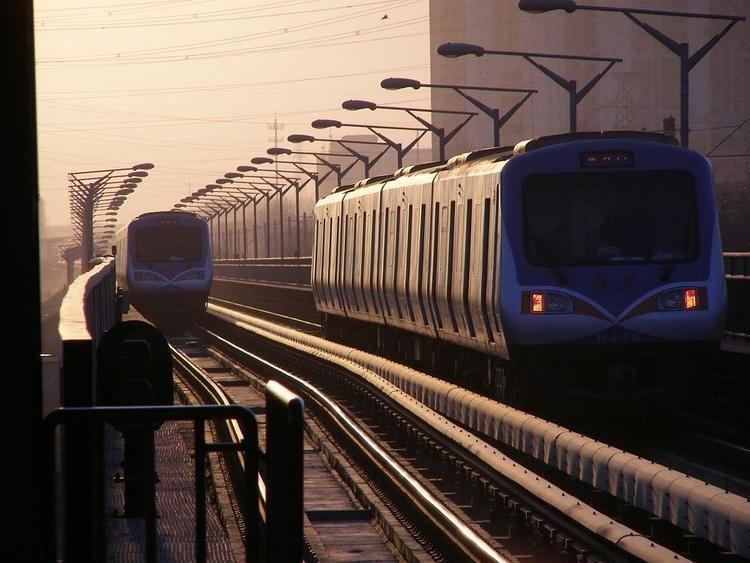 | ||
Daily ridership 745,300 (2014 Avg.)
939,300 (2014 Peak) Operator(s) Beijing Mass Transit Railway Operation Corp., Ltd Terminis Dongzhimen Station, Xizhimen Station | ||
Line 13 of the Beijing Subway (Chinese: 北京地铁13号线; pinyin: běijīng dìtiě shísānhào xiàn), also known as The CityRail (城市铁路) (not to be confused with BCR) especially before the opening of Line 5, or erroneously as Light Rail, is a metro line that serves the northern suburbs of Beijing. On a map, Line 13's route is shaped like an inverted U that arcs north of the city and connects residential suburbs in Haidian, Changping and Chaoyang Districts with the 2nd Ring Road and Line 2 at Xizhimen and Dongzhimen. With the exception of Dongzhimen, all of Line 13's tracks and stations are located on the surface or elevated above ground. At 40.9 km, Line 13 used to be the longest line of the Beijing Subway until the line 10 extension opened; 14 of its 16 stations are on the surface. Line 13's color is amber. During rush hours, the section between Xizhimen and Wudaokou Stations is the second most congested section in the Beijing subway network, operating at 130% capacity.
Contents

Fare
Starting fare of RMB(¥) 3.00 that increases according to the distance fare scheme introduced in December 2014.
Hours of operation
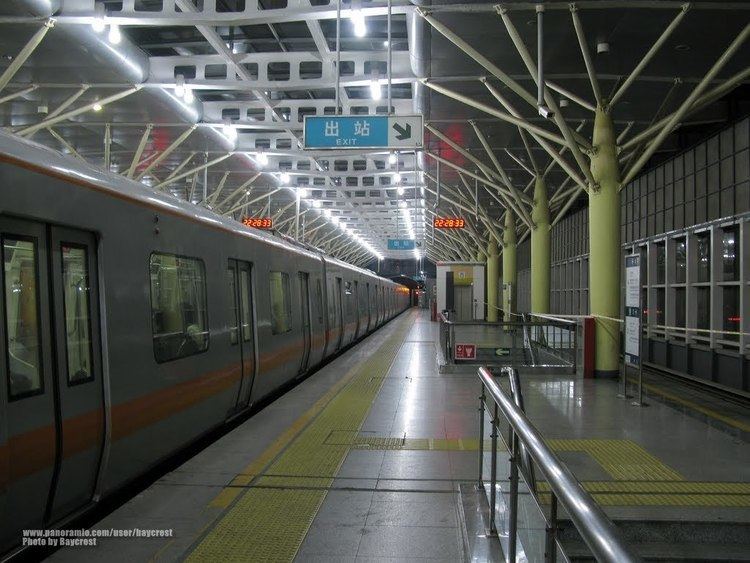
The first trains depart from Xizhimen and Dongzhimen at 5:35am. The last trains to go the full-distance and reach the other terminus depart from Xizhimen and Dongzhimen at 10:42pm. In addition, Line 13 offers later night trains from either terminus that travel half of the full route. The last train to leave Xizhimen, departs at 11:45pm and ends its journey at Huilongguan at 12:09am. The last train to leave Dongzhimen, departs at 11:45pm and ends its journey at Huoying at 12:09am. For the official timetable, see. The frequency of trains on Line 13 vary from 3.5 minutes per train during the morning rush hour (6:20am–9:40am) to 5 minutes per train during the evening rush hour (4:40pm–8:40pm) to 10-11.5 minutes per train after 10:50pm. For full listing of train frequency, see.
Route

Line 13's route is shaped like a horseshoe over northern Beijing. From Xizhimen in Xicheng District, Line 13 heads north, running alongside the Beijing-Baotou Railway into Haidian. After three stops in the bustling university district -- Dazhongsi, Zhichunlu (transfer to Line 10) and Wudaokou—Line 13 leaves the 5th Ring Road and enters the suburbs of northern Haidian. At Xierqi, Line 13 meets the Changping Line, and turns east, following the southern edge of Changping District for three stops (Longze, Huilongguan, and Huoying), before turning to the southeast. It enters Chaoyang District at Lishuiqiao (transfer to Line 5) and curls southwest after Beiyuan onto the Beijing-Chengde Expressway. At Wangjing West, Line 13 intersects with Line 15. After entering the 3rd Ring Road at Guangximen, the line runs straight south, along the remnants of the eastern earthen wall to Liufang. Then, Line 13 goes underground to Dongzhimen in Dongcheng District where transfers are available to Line 2 and the Airport Express.
Stations (from West to East)
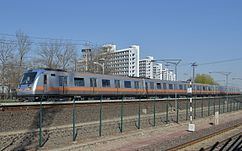
History
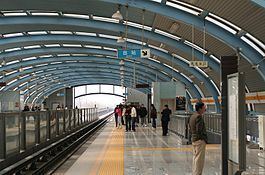
Line 13 was opened in two phases: The western section between Xizhimen and Huoying was opened on September 28, 2002; the eastern section from Huoying to Dongzhimen was opened on January 28, 2003. Despite being numbered 13, the line was only the third subway line to enter into operation. It was the first Beijing Subway line to adopt Yikatong, the electronic farecard, at the end of 2003.
Current
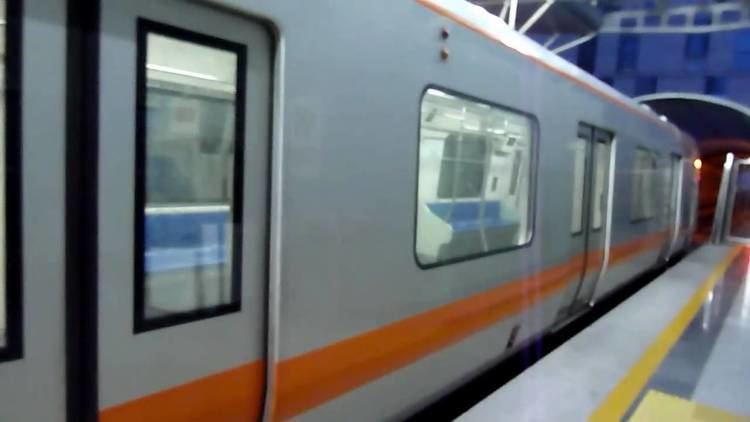
The rolling stock maintenance facility is located at Huilongguan. From mid-2008 to early 2009, all Line 13 trains were converted from four cars per train to six cars per train.
Former
The DK4 trainsets, originally built in the early 1970s by the Changchun Car Company, were delivered to Pyongyang Metro in anticipation of its opening in 1973. Some of them were returned to China in 1998 and were used on Line 13 when it opened in 2002 until they were eventually replaced by newer DKZ5 and DKZ6 trainsets (it is unknown if they were returned to Pyongyang).
Trainset number H457 has exited service; this train was fraught with quality issues and came in a different livery than other trains.
